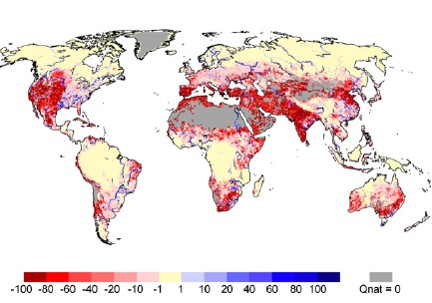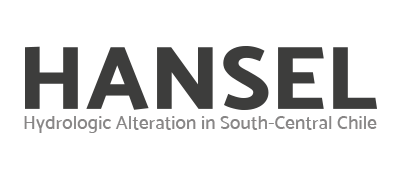Increasing demands on water resources has produced certain degree of hydrologic alteration (HA) in freshwater ecosystems worldwide.
The HA, together with other anthropogenic stressors (e.g., soil erosion, fragmentation, morphological changes to habitats or the increase of non-native species), have caused freshwater ecosystems present one of the largest projected extinction rates on the planet. Understanding how human-induced alterations to the flow regime impact river ecosystems and the services they provide is a fundamental scientific and social challenge that should be urgently addressed. This will require new approaches that integrate research with resource management to guide water managers through complex decisions compiling with multiple objectives, i.e., services provisioning and ecosystem conservation.

Impact of water withdrawals and reservoirs on long term natural low monthly flows (source: Doll, P. et al. 2009. Hydrol. Earth Syst. Sci., 13, 2413–2432)
The definition and prediction of the HA in rivers is a matter that to date has not been completely tackled. For instance, reservoirs vary in size, function and operational rules, while catchment land-use configuration can be modified under different socioeconomic objectives (e.g., agriculture, forestry, urbanization) which might produce contrasting HA patterns. In addition, the degree and direction of the alteration might also depend upon the characteristics of the impacted river. All these factors also hinder the definition of straightforward relationships between HA and ecological consequences. In this regard, enhancing the capabilities to determine the actual HA and quantify the cause-effect relationship between HA and river ecosystem functioning is paramount in the water resources research field.
